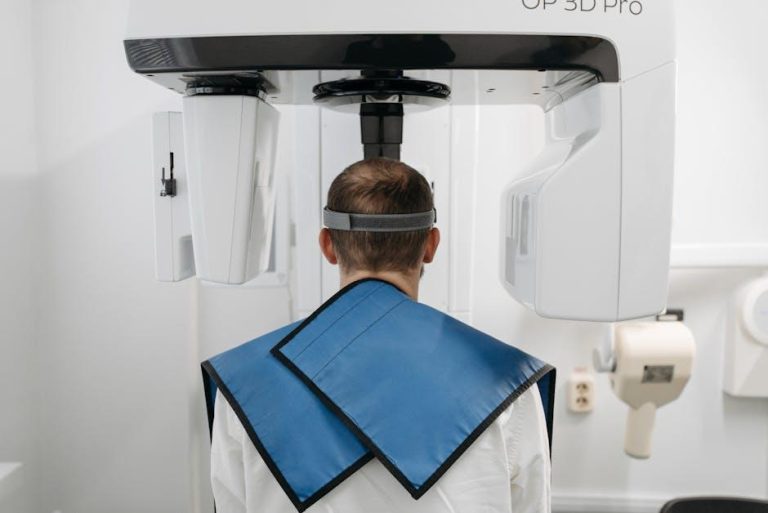
Dental Imaging Tech Boom: AI & 3D Scanners Reshaping the $6B Market – PR Newswire
The dental industry is undergoing a significant technological transformation, driven by breakthroughs in artificial intelligence (AI) and 3D imaging. According to PR Newswire, the global dental imaging market—currently valued at approximately $6 billion—is poised to experience explosive growth as these innovations become mainstream. This article explores how AI and 3D dental scanners are reshaping dental diagnostics, treatment planning, and patient experiences, leading to improved clinical outcomes and business growth.
The Evolution of Dental Imaging Technology
For decades, dental professionals relied primarily on traditional X-rays and 2D imaging to diagnose oral health issues. While effective, these methods had limitations in visualizing complex dental structures in detail. Recently, the integration of AI algorithms and 3D imaging technology has revolutionized the way dentists visualize teeth and supporting tissues.
3D dental scanners capture ultra-precise digital impressions, eliminating the need for messy molds and providing a comprehensive view of patients’ oral anatomy. When paired with AI, these scanners enable automated image analysis, anomaly detection, and treatment recommendations—all with unparalleled accuracy and efficiency.
Key Drivers Behind the Dental Imaging Tech Boom
- Advancements in AI Algorithms: Machine learning models trained on vast datasets can detect cavities, bone loss, and other dental anomalies faster and more reliably than manual assessment.
- Improved Patient Experience: 3D scanners reduce discomfort and expedite dental procedures, leading to higher patient satisfaction and retention.
- Increased Demand for Personalized Treatments: AI-backed imaging allows clinicians to design custom implants, crowns, and orthodontic devices with superior fit and aesthetics.
- Rising Prevalence of Dental Diseases: Early diagnosis powered by advanced imaging helps tackle issues like periodontal disease and oral cancer effectively.
- COVID-19 and Contactless Technologies: Non-invasive 3D scanning supports tele-dentistry initiatives and reduces infection risks in clinical settings.
Benefits of AI and 3D Scanners in Dental Imaging
These technologies offer multiple advantages across clinical, operational, and patient-centered domains:
- Enhanced Diagnostic Accuracy: AI reduces human error by identifying subtle changes invisible to the naked eye.
- Faster Turnaround Times: Digital scans can be processed immediately, accelerating treatment decisions.
- Improved Treatment Planning: 3D visualization aids better communication between dentists and patients, helping them understand procedures clearly.
- Cost-Effectiveness Over Time: While initial investment may be high, reduced remake rates and shorter chair times improve overall profitability.
- Seamless Integration with CAD/CAM: Direct data transfers to computer-aided design and manufacturing systems streamline prosthetic creation.
Practical Tips for Dental Practices Adopting AI and 3D Imaging
Embracing new technologies can be daunting. Here are some actionable recommendations for dental clinics looking to leverage AI and 3D scanners:
- Invest in Training: Ensure dentists and technicians receive comprehensive education on using AI tools effectively.
- Start Small: Pilot new dental imaging equipment with selected cases to build confidence and evaluate ROI.
- Choose Scalable Solutions: Pick AI platforms and scanners that can grow with your practice’s needs.
- Prioritize Data Security: Maintain HIPAA compliance and safeguard patient data when using cloud-based AI analytics.
- Collaborate with Vendors: Work closely with developers for updates, maintenance, and customization tailored to workflow.
Case Study: Transforming Orthodontics with AI and 3D Scanning
One mid-sized dental clinic in California integrated a state-of-the-art 3D intraoral scanner combined with AI-driven diagnostic software. Within six months:
| Metric | Before Adoption | After Adoption |
|---|---|---|
| Diagnostic Accuracy | 85% | 97% |
| Patient Wait Time | 45 minutes | 20 minutes |
| Patient Satisfaction Score | 78/100 | 92/100 |
| Rate of Retakes | 12% | 2% |
The results showed markedly faster diagnosis and treatment planning, coupled with increased patient trust and referrals—a testament to the power of combining AI with advanced 3D imaging.
SEO Keywords for Dental Imaging Technology
| Primary Keywords | Secondary Keywords |
|---|---|
| dental imaging technology | 3D dental scanners |
| AI in dental imaging | dental AI software |
| digital dental imaging | intraoral scanners |
| dentistry innovation | computer-aided design dentistry |
| oral health diagnostics | AI dental diagnosis |
Future Outlook: What’s Next for the $6B Dental Imaging Market?
As AI and 3D imaging technologies mature, their applications will expand beyond diagnostics into treatment monitoring, predictive analytics, and personalized oral healthcare plans. Innovations such as augmented reality (AR) for interactive patient consultations and robotics-assisted dental surgeries are already on the horizon.
Market analysts predict the dental imaging sector will exceed $10 billion by 2030, driven largely by AI-powered automation and growing acceptance of 3D scanning in routine dental care. Forward-thinking dental professionals who adopt these tools early stand to gain a competitive edge through improved clinical outcomes and patient loyalty.
Conclusion
The boom in dental imaging technology, fueled by AI and 3D scanners, is transforming a traditionally conservative $6 billion market into an innovation hotspot. Modern dental practices leveraging these advanced tools benefit from higher diagnostic accuracy, enhanced patient experiences, and streamlined workflows. For patients, this translates into faster, more comfortable, and highly personalized dental care. Whether you are a dental professional, industry stakeholder, or patient, understanding and embracing this technological wave will be key to thriving in the future of dentistry.
Stay informed, stay ahead — the future of dental imaging is here, and it’s smarter than ever.


